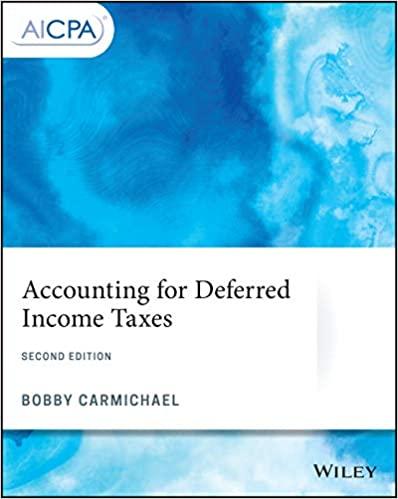Question
At December 31, 2020, the trial balance of Darby Antiques contained the following amounts before adjustment. Journalize entries to record transactions related to bad debts.
At December 31, 2020, the trial balance of Darby Antiques contained the following amounts before adjustment. Journalize entries to record transactions related to bad debts.
Debit Accounts Receivable 385,000
Credit Allowance for Doubtful Accounts 1,000
Credit Sales Revenue 970,000
Instructions
a. Based on the information given, which method of accounting for bad debts is Darby usingthe direct writeoff method or the allowance method? How can you tell?
b. Prepare the adjusting entry at December 31, 2020, for bad debt expense, assuming an aging schedule indicates that 11,750 of accounts receivable will be uncollectible. 10,750
c. Repeat part (.b.) assuming that instead of a credit balance there is a 1,000 debit balance in Allowance for Doubtful Accounts.
d. During the next month, January 2021, a 3,000 account receivable is written off as uncollectible. Prepare the journal entry to record the writeoff.
e. In February, 2,300 of accounts receivable, previously written off, was collected. The 2,300 includes GST. Prepare the required journal entries.
f. Assume the balance for Accounts Receivable on 1 January 2020 was 420,000, including GST, and the balance in the Allowance account was 2,000, not including GST. The Sales Revenue shown (970,000) is for the year. Calculate the days in accounts receivable for 2020 and analyse the trend from 2019, when days in accounts receivable were 140. Suppose Darbys credit terms allow customers to pay in equal installments over a six-month period. How would this affect your conclusion as to collection efficiency?
Please note the following additional information
Incorporate GST, using the GST Clearing account, as needed. Accounts receivable of 385,000 is GST inclusive, but the Allowance for Doubtful Accounts and Sales Revenue accounts are net of GST.
For part b., the figure 11,750 is net of GST.
For part d., the figure 3,000 does not include GST, i.e., the GST inclusive amount is 3,450. The GST portion is reimbursable from the government.
Step by Step Solution
There are 3 Steps involved in it
Step: 1

Get Instant Access to Expert-Tailored Solutions
See step-by-step solutions with expert insights and AI powered tools for academic success
Step: 2

Step: 3

Ace Your Homework with AI
Get the answers you need in no time with our AI-driven, step-by-step assistance
Get Started


